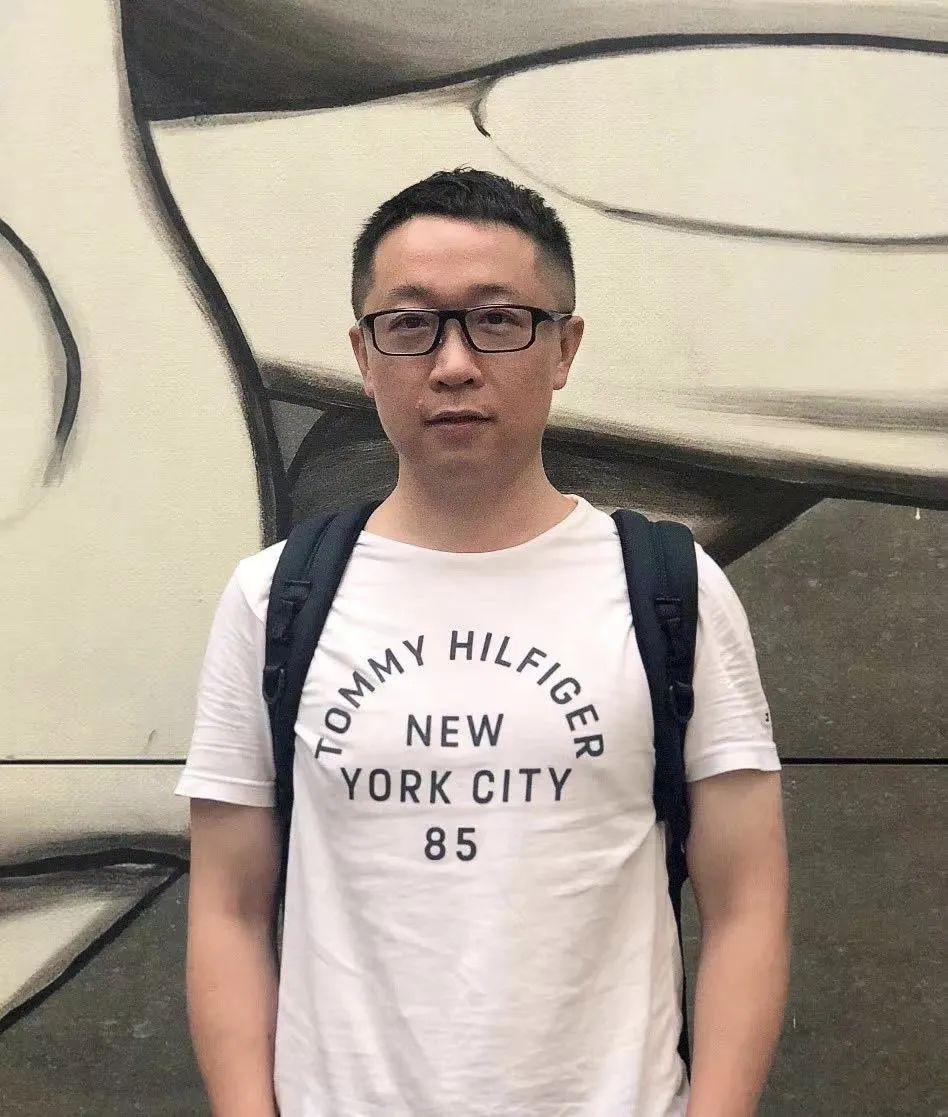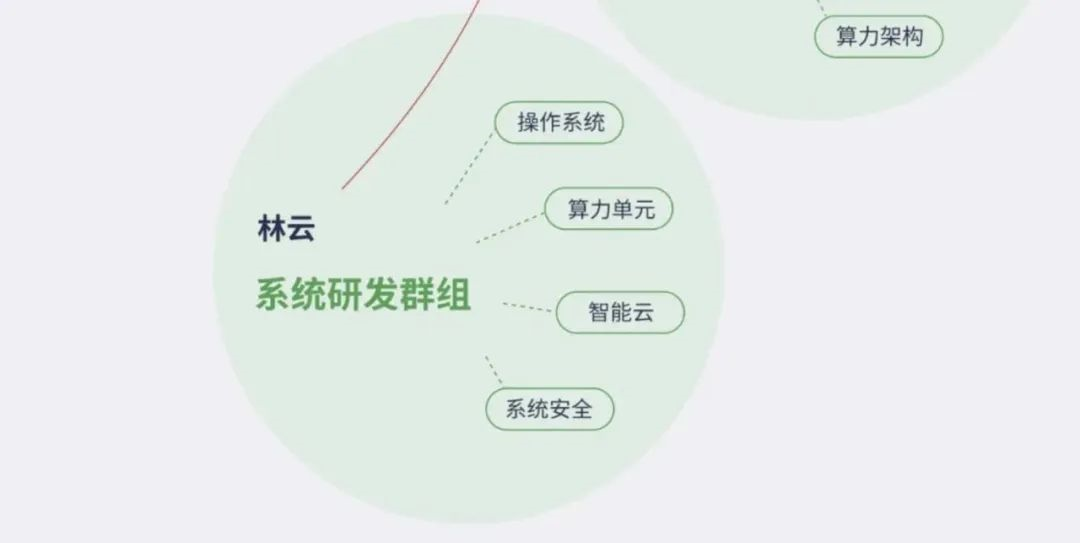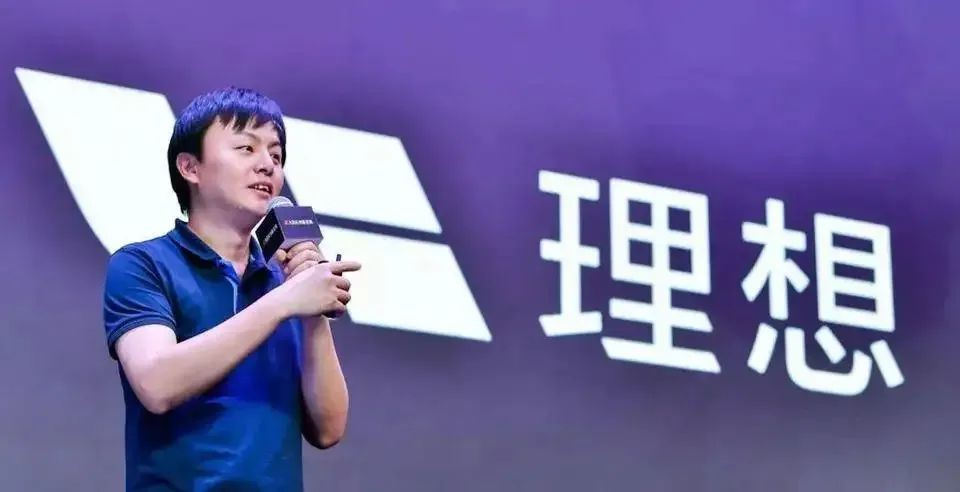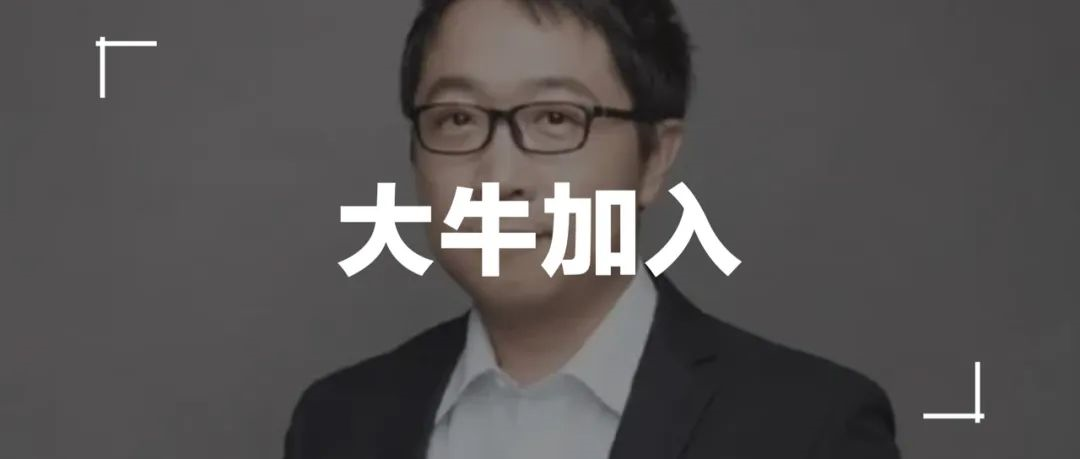Author: Mu Min
In the field of intelligent electric vehicles:
- Car companies with technology, talent reserves and willingness to invest are moving towards full-stack self-research;
- Some car companies, due to the difficulty of turning a big ship and insufficient reserves in emerging technology fields, choose to directly find external suppliers;
- Some car companies are currently not making choices and are grasping both self-research and external supply. They will make a complete switch to self-research when the timing is right in the future.
Currently, many new car companies in China have included operating systems (smart driving, smart cabin, whole vehicle), computing hardware (chips, domain control), autonomous driving systems, and even power batteries in their self-research scope.
The protagonist of this article is actually Ideal Automotive’s full-stack self-research in the field of intelligent driving.
Like XPeng Motors and NIO, Ideal Automotive also has the research and development goal of advanced autonomous driving systems. However, from the perspective of the size of the autonomous driving team, talent reserves, and investment intensity, Ideal Automotive is not as prominent as XPeng Motors or NIO.
Li Xiang has publicly stated that he hopes to obtain a ticket to the autonomous driving race track in 2025 and make Ideal Automotive the world’s largest autonomous driving operator by 2035.
If this goal is to be achieved, it is necessary to continuously strengthen talent reserves, especially in some core technical talents.
Xie Yan joins Ideal Automotive

On August 30th, 36Kr reported that Ideal Automotive has recruited a new head of forward-looking technology and research and development business, Xie Yan.
Xie Yan’s resume compiled from public information:
- Former Chief Architect of AliOS;
- Former Vice President of Huawei Consumer BG Software Department and Director of Terminal OS Department.
While at Huawei, he was deeply involved in the development of HarmonyOS.
Currently, Xie Yan has joined Ideal Automotive as the head of the Systems R&D department, with a rank of M11, higher than that of the Vice President (M10), and directly reporting to Li Xiang at the M12 level.
In fact according to “Wandian Auto” in June of this year, after former CTO Wang Kai left, Ideal Automotive hired a new software development executive “Lin Yun”, creating the “Systems R&D Group” specifically for “Lin Yun”, with several major businesses including operating systems, computing power units (autonomous driving chips), cloud computing, and information security.

Comparing these two reports and analyzing Xie Yan’s previous resume and work, we speculate that it may be the same person.# Introduction of Xie Yan
Xie Yan’s arrival is mainly to promote the research and development of Ideal Operating System (LiOS), autopilot chips, and other technologies. This is a very important senior personnel change because currently in the executive system of Ideal Auto, only one person has the M11 level, and the level of vice president is also below this role, which shows that Li Xiang attaches great importance to this role.
However, Ideal Auto has not officially announced Xie Yan’s joining, but interestingly, there is already a related entry of him on Baidu Baike.
Who is Xie Yan?
Why is Xie Yan so important, and why did Li Xiang give him such a high level of job? It starts with Xie Yan’s personal experience.
In early 2014, Xie Yan joined Alibaba, and it was at this time that Alibaba began to develop a car operating system based on YunOS (the predecessor of AliOS). Later, Alibaba and SAIC jointly established the Internet car project Banma Network. Banma Network is based on Alibaba’s car operating system to create Internet car-related systems and applications, and was the first to be installed on the Roewe RX5, which was then known as China’s first “Internet car.”
Xie Yan was deeply involved in the Internet car project and was mainly responsible for the research and development of the operating system, serving as the general manager and chief architect of AliOS.
Later, Banma Network’s Banma Intelligent Driving System, based on AliOS, landed on various brands and models such as Roewe, MG, Datong, Dongfeng Citroen, Ford, and GS.
But good times didn’t last long. As a joint venture between Alibaba and SAIC, Banma Network’s core foundation is AliOS, and many Banma Network employees use Alibaba’s job-grade system, resulting in many management problems, coupled with poor commercial progress. In 2019, the AliOS team and the Banma Network team initiated a restructuring. The complete technical system and core technology of AliOS were planned to be injected into Banma Network. It was during this period that Xie Yan walked away from Alibaba, leaving AliOS where he had worked hard for five years.
Xie Yan left Alibaba in September 2019, becoming the first senior executive to leave after the AliOS and Banma Network restructuring. Xie Yan said at the time of leaving that he would “continue to pay attention to the development of operating systems and computing architecture.”
In fact, during his time at Alibaba, Xie Yan was a colleague of the current Ideal Auto VP and product leader Fan Haoyu. There is still a patent for “Mobile Terminal Multi-Application Window System Display Method” co-signed by Xie Yan and Fan Haoyu available online. Fan Haoyu’s first major project at Ideal Auto was actually the development of the intelligent cockpit system for Ideal ONE, which is very relevant to Xie Yan’s expertise.
 “`
“`

During his time at Alibaba, Xie Yan shared his insights on automotive operating systems in public forums:
-
“Cars will become the next mobile intelligent terminal, and the operating system will become a core component. Its completeness, security, and richness of ecosystem will be the key to determining future development.”
-
“In China’s future automotive industry, there are only two OS options for opening up services to the outside world: one is AliOS, a completely self-developed operating system for the automotive driving scenario from the bottom up, and the other is other OS based on modifications to Android.”
In fact, these two viewpoints overlap with many of Li Xiang’s viewpoints, which may well have been the main driving force for Xie Yan to join Li Auto.
Therefore, his joining Li Auto is actually a chance for Li Auto to develop its own operating system from scratch.
In August and September 2019, when Xie Yan left Alibaba, Huawei also launched its self-developed operating system HarmonyOS. This is an all-new distributed operating system for all scenarios, creating a world of super-virtual terminal interconnection, organically connecting people, devices, and scenarios, helping consumers discover and connect with multiple smart terminals and share resources to provide scenario-based experiences with appropriate devices.
At this time, Xie Yan joined Huawei’s business of HarmonyOS, serving as the vice president of the Consumer BG Software Department, director of the Terminal OS Department, and chief architect of Distributed Intelligent OS, reporting to Wang Chenglu, father of HarmonyOS and president of Huawei’s Consumer BG Software Department. Xie Yan’s job rank is Level 21.
Subsequently, Huawei released the HarmonyOS 2.0 version and established a developer ecosystem, and applied the system to the intelligent cockpit field.
After working at Huawei for two years, Xie Yan encountered change again.
In May 2022, Xie Yan’s immediate supervisor, Wang Chenglu, left Huawei to join Shenzhen OpenHong Digital Industry Development Co., Ltd. (OpenHong), a HarmonyOS ecosystem company and also a Huawei Huben Investment portfolio company.
During this process, Xie Yan also chose to leave Huawei, but he did not follow Wang Chenglu to OpenHong and instead looked for other opportunities on his own.
Sources familiar with the matter revealed that prior to joining Li Auto, Xie Yan also talked with other companies, but ultimately chose Li Auto, which was also related to Fan Haoyu’s invitation to join.
After joining Li Auto, Xie Yan leads the system development group, mainly including operating systems, computing units, intelligent clouds, and system security businesses.
Xie Yan’s entry into Li Auto is not only because Li Auto needs talent in this field, but also because CTO Wang Kai left, and someone needed to take over some of his responsibilities.
What is Xie Yan doing at Li Auto?
“`### Ideal’s Software Intelligence Business Has Undergone Multiple Changes
Before August 2020, Ideal’s software business was led by Vice President of Intelligent and System, Fan Haoyu. His responsibilities included R&D related to software such as intelligent cockpit, autonomous driving, and cloud computing. At that time, there were only two Vice Presidents in Ideal’s internal management, and Fan Haoyu was one of them, reporting directly to Li Xiang.
In August 2020, Wang Kai officially joined Ideal as the CTO and took over Fan Haoyu’s Intelligent and System Department. He led the R&D of real-time operating systems and intelligent driving-related systems. At that time, Ideal’s autonomous driving team consisted of only 20+ people and the computing team had 10+ people.
After Fan Haoyu’s position became vacant, Ideal established the Product Department at the beginning of 2021, which is now led by Fan Haoyu, making him the Vice President of Products.
During Wang Kai’s tenure, he established the operating system and computing unit team. He was also responsible for the Intelligent Space, Computing Architecture, and Intelligent Driving teams, and even established the Sensor R&D team within Ideal. But ultimately, Wang Kai left Ideal after a year and a half.
The R&D work that Wang Kai was responsible for was briefly taken over by Ideal’s Chief Engineer and co-founder, Ma Donghui. He also led the design, overall vehicle electrification, and R&D operations, unifying the software and hardware R&D teams. However, currently, Ideal still needs Ma Donghui to lead in terms of pure electric platform and overall vehicle design R&D and manufacturing. Therefore, there still needs to be someone specifically responsible for related businesses such as the operating system, intelligent space, and computing platform.
Xie Yan was just the right candidate, so Ideal established the “System R&D Group” for him and gave him jurisdiction over the operating system and chip businesses.
In this way, Ideal has found a suitable leader for its operating system and autonomous driving chip development.
Why Did Ideal Hire Xie Yan?

Ideal’s demand for Xie Yan is to develop its own operating system and promote the self-development of chips. This is the foundation for Ideal’s future survival in the intelligent cockpit and intelligent driving fields.
Ideal’s goal for full-stack self-development is the integration of operating systems, chips, autonomous driving, and intelligent cockpit software and hardware. The core focus is software algorithms, including operating systems and upper-level application algorithms.
The reason why Ideal wants to self-develop a real-time operating system is that it wants to establish a complete service-oriented architecture (SOA) and requires full self-development of the software, from the operating system to middleware to upper-level application modules, to ensure that each part’s core Kernel is fully mastered. At the same time, Ideal allows external suppliers to enter through external API interfaces, which ensures the overall communication efficiency and low latency of the system under user service scenarios.#LiOS needs to connect the domains of intelligent driving, intelligent cockpit, and vehicle control to become a complete central domain. In fact, this is the same strategy as Huawei’s. Huawei’s HarmonyOS for cars includes HarmonyOS cockpit operating system (HOS), intelligent driving operating system (AOS), and intelligent vehicle control operating system (VOS). In the future, LiOS will have to shoulder such responsibilities as well.
When it comes to car operating systems, in fact, most domestic car companies choose to “modify” the basic underlying operating system. Given that the entire car OS needs to simultaneously possess security, scalability, and a rich application ecosystem, most car companies choose to build a complete car OS in the form of QNX+Linux/Android based on different domain needs.
Foreign traditional car companies generally use a QNX+Linux-based form, such as Mercedes-Benz’s MBUX, BMW’s iDrive, Audi’s MMI, Toyota’s G-Book, etc. In China, since the Android ecosystem is well-established, domestic brands and new vehicle manufacturers tend to build car systems based on Android, such as BYD’s DiLink, Geely’s GKUI, NIO’s NIO OS, and Xpeng’s Xmart OS.
All of the above car OS are based on not changing the underlying kernel or virtual machine, but only customizing the upper-level application program and car services based on different needs. This is also the way that most car companies choose to enter the car OS race.
However, this type of operating system still depends on the underlying operating system in nature, which is equivalent to renovating a bare house, but the layout of the house remains unchanged.
Systems represented by Huawei HarmonyOS, AliOS, Volkswagen’s VW.OS, and Tesla’s Version are customized systems. Such customized systems can take into account both the security and scalability considerations of cars, as Tesla’s Version has well proven. Huawei and Ali’s strong technical strength undoubtedly have a good leading role in the domestic automotive car system industry, which is of profound significance in pursuing localization and independent control.
Therefore, the Ideal Car also follows such thinking, to independently develop a real-time operating system LiOS, and to make more customization and characteristics like Huawei HarmonyOS and AliOS, to truly serve the intelligent car defined by the Ideal Car. Therefore, from this point of view, Xie Yan’s work experience in these two companies is just what the Ideal Car needs.
In addition to the operating system, the most core components of future intelligent cars are chips, especially automatic driving chips. Although Xie Yan himself has no hardware experience related to chips, in fact, he can participate in the architecture layer, software layer, middleware, application layer, development toolchain, chip ecology, and other aspects of chips.Currently, in terms of the supply of self-driving chips, NIO initially used Mobileye’s EyeQ chip. After the breakup, it switched to Horizon’s Journey 3 chip for the updated NIO ONE, while the upcoming NIO L8 may adopt Horizon’s Journey 5 chip. As of now, NIO’s core suppliers for self-driving chips are NVIDIA and Horizon. While ensuring high performance, they can also provide high cost-effectiveness.
However, NIO is not satisfied with relying solely on external suppliers. After experiencing struggles in this area, it has decided to develop its own self-driving chips. In order to fully unleash the power of autonomous driving algorithms, it is necessary to deeply integrate them with the computing unit while also squeezing out the ultimate performance of the chip and reducing costs. The predecessor, Tesla’s FSD, has already set a good example in this regard, so many car companies are willing to learn from them.
Automakers such as BYD, NIO, XPeng Motors, Xiaomi Automobile, and Huawei are all taking the path of developing their own self-driving chips.
Many people may ask, is it easy to develop chips? Can automakers just do it themselves?
In fact, it is neither simple nor difficult to develop chips. An unverified estimate indicates that it costs around $500 million to develop a usable self-driving chip.
This $500 million cost mainly includes ARM architecture authorization fees, specialized IP core authorization fees, NOC connection technology from Qualcomm’s subsidiary, recruitment of talent for deep learning, compiler costs, and integrating the processor into the chip. With these costs, an ASIC chip can be developed, and when combined with the cost of production and manpower, $500 million is affordable for a new car company.
Moreover, an important point is that new car companies are themselves purchasers of self-driving chips. For example, if a company like NIO ships one million cars in the next year, it is worthwhile for them to invest a large sum of money like this.
LiOS, the software operating system, and the self-driving chip at the hardware level are important components of NIO’s intelligentization strategy, and their development is the responsibility of Xie Yan’s R&D group. One can imagine the weight on his shoulders. Tesla’s success has already proven that a full-stack self-developed strategy with an integration of both software and hardware is the right path for automakers to become more intelligent.
If Xie Yan can make breakthroughs in his work at NIO, it will be a huge driving force for this 7-year-old new car force.
This article is a translation by ChatGPT of a Chinese report from 42HOW. If you have any questions about it, please email bd@42how.com.
